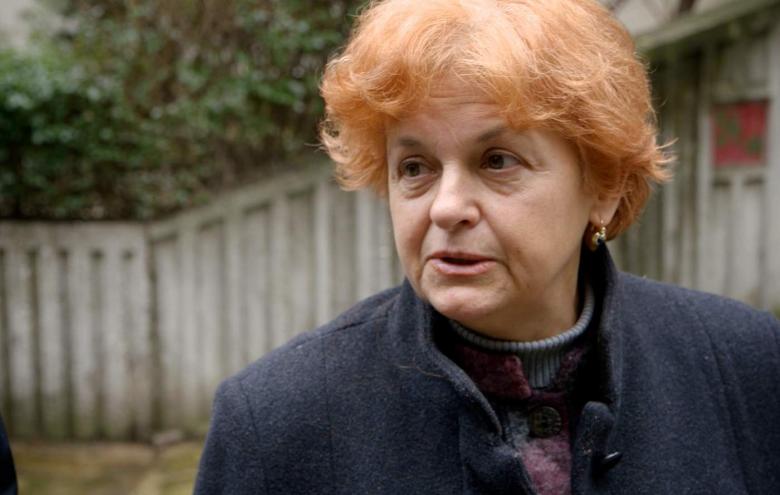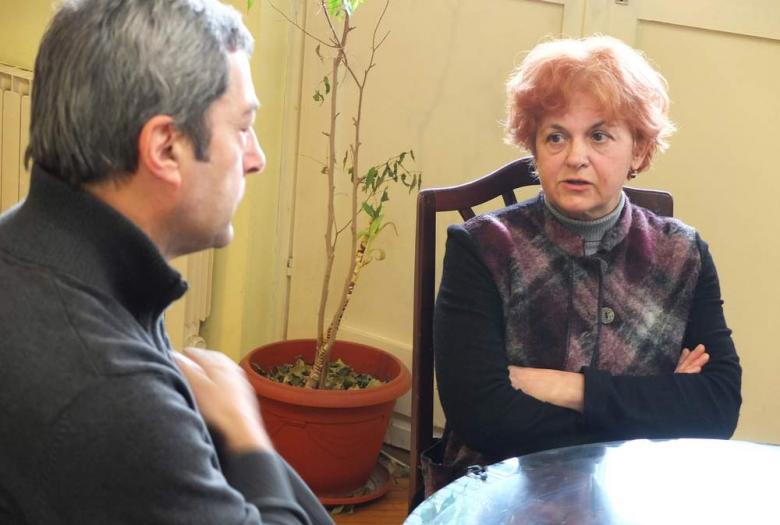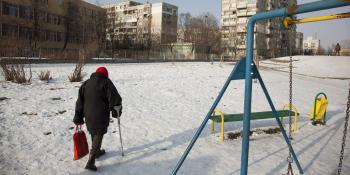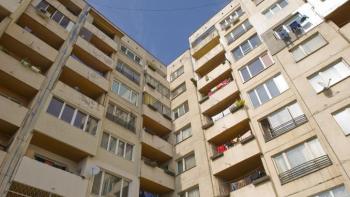Living in the Cold
It doesn't have to be that way
Lile Kik is worried. A dynamic professional who is always on the go, she’s a few months away from retirement and she’s cold all the time.
Lile’s a tenant in Skopje’s Aerodorm apartment complex. Thirty-five years ago, the buildings were brand new; today, they are crumbling showing the signs of years of neglect. Her flat’s average temperature is 16 degrees centigrade. It lacks insulation, double glazed windows and proper doors. It also has an asbestos tiled roof that needs to be removed and an exterior façade that’s falling off.
So, while Lile would like to rush home from work, she doesn’t. She is fed up with always having to find some excuse to be the last one at work because it is warmer there than at home.
“It is warmer everywhere else,” says Lile, “even the supermarkets.”

But, Lile isn’t alone.
Almost 80% of Macedonia’s housing stock was created between 1960-1980. Built from pre-fabricated, low quality materials, the buildings were once state owned and maintained. Today, the privatized housing leaks heat and leaves tenants in the cold. City inspectors who issue energy passports graded Lile’s flat ‘2’ out of ‘10’. So Lile, fed up with high bills and chilly rooms, decided that as head of her building’s homeowners association to do something about it.
Friendly advice and a potential solution
Lile had heard about a new energy efficiency program from a friend. The program would help insulate her building, cut individual energy bills, and improve her building’s grim exterior. Available through Habitat for Humanity, the only organisation providing loans to home associations, she decided to find out more.
However, before moving forward, Lile did her homework. She surveyed the other tenants in her apartment block. Many were in favour of moving forward. She, along with other proactive tenants, identified three companies to quote on the project and then selected the best company. She did all the paperwork and calculated that a loan from Habitat would pay back, based on energy savings alone, over 10 years.
Gaining support
To get the project moving, Lile still had to convince all of the other 21 tenants to agree to the Habitat loan and share the cost. So far, 19 are for it—in theory. They still haven’t signed an agreement. And, Lile was worried. What if someone decided to back out or that the other two decided not to join. She knew from her research that families could save on average 20-30 Euros a month or around 300 euros per year. Plus, they would improve their living conditions, reduce energy consumption, and put more money in their own pockets.
So, while it all looked good on paper, nothing would prove the point better than a real-life example. So she went to see Jovan Vranik, who lived a few blocks away and had already gone through the process.

Working together
“It wasn’t easy at first,” said Jovan. “It’s a big building and we had a lot of meetings. But slowly we got there. Habitat helped a lot. We selected the builder out of the three offers we received, and then Habitat made sure everything was in order, that the materials arrived on time and were properly used, and that the building company delivered everything on time. Habitat handled everything. The entire project took only a month and half to complete. What a difference Habitat for Humanity made.”
It is obvious that Jovan’s words are like music to Lile’s ears. She looked at the building from the outside. “It really looks nice.” she said. “How much have you saved on your energy bills?”
“Well, a lot,” says Jovan, proudly showing the electricity bills. “Look at this it used to be 60 Euros and now it is only 40. See it for yourself. Last year, when the central heating went off at 9 pm, our home was cold by 10 pm and we had to put on electric heaters. Now, our home is warm until three, perhaps four in the morning - that’s what good insulation does for you - and the humidity in the walls has gone, the smell has gone, we couldn’t be happier.”

“So how did you convince yourself and the others that this was worth doing?” Lile asked.
“Well, in the end, it was very easy,” said Jovan.
“We realised that the money we borrowed from Habitat for Humanity was actually not an expense, but an investment,” Jovan continued. “Everybody in the building is happy because Habitat was here with us every step of the way. The investment has also increased the value of our flats several times. I also invited the inspectors a few weeks ago to get my energy passport. I got a 10, a pure 10, the highest possible rating.”
To date more than 1,100 Macedonian families have received renovation loans and support. And while there are still more than 100,000 units in apartment buildings that need help, the word seems to be spreading fast.
Lile smiles. She almost hugs Jovan. She says she knew she was doing the right thing and is now even more convinced and determined than ever to persuade her fellow tenants. And, if anyone can do it, Lile Kik can.
Habitat’s energy efficiency projects
- Help tenants by doing initial energy audits and make decisions to improve energy efficiency and perform renovation of the building.
- Provide legal advice and helps owners form legal entities and take out collective loans.
- Obtain construction permits and help get all the permits to authorize the work. Habitat also helps find and select companies who will do the actual insulation work, improve facades and common spaces.
- Train homeowners on ways to take decisions, and manage and maintain their buildings so they do it themselves.
You can find more information about Habitat’s work on energy efficiency in Macedonia from Habitat for Humanity Macedonia.

